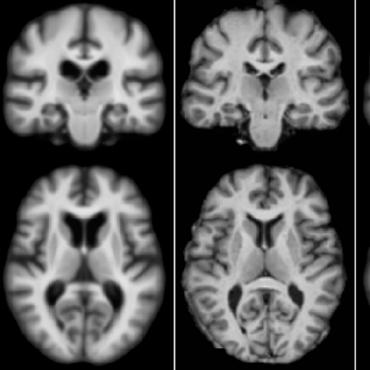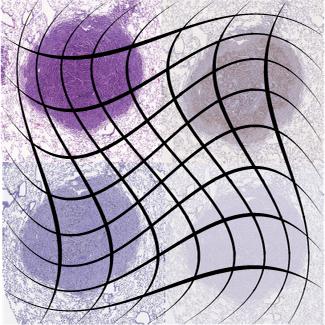Medical Image Registration
77 papers with code • 4 benchmarks • 8 datasets
Image registration, also known as image fusion or image matching, is the process of aligning two or more images based on image appearances. Medical Image Registration seeks to find an optimal spatial transformation that best aligns the underlying anatomical structures. Medical Image Registration is used in many clinical applications such as image guidance, motion tracking, segmentation, dose accumulation, image reconstruction and so on. Medical Image Registration is a broad topic which can be grouped from various perspectives. From input image point of view, registration methods can be divided into unimodal, multimodal, interpatient, intra-patient (e.g. same- or different-day) registration. From deformation model point of view, registration methods can be divided in to rigid, affine and deformable methods. From region of interest (ROI) perspective, registration methods can be grouped according to anatomical sites such as brain, lung registration and so on. From image pair dimension perspective, registration methods can be divided into 3D to 3D, 3D to 2D and 2D to 2D/3D.
Source: Deep Learning in Medical Image Registration: A Review
Libraries
Use these libraries to find Medical Image Registration models and implementationsDatasets
Latest papers
Inverse Consistency by Construction for Multistep Deep Registration
Inverse consistency is a desirable property for image registration.
SITReg: Multi-resolution architecture for symmetric, inverse consistent, and topology preserving image registration
Deep learning has emerged as a strong alternative for classical iterative methods for deformable medical image registration, where the goal is to find a mapping between the coordinate systems of two images.
Non-rigid Medical Image Registration using Physics-informed Neural Networks
Biomechanical modelling of soft tissue provides a non-data-driven method for constraining medical image registration, such that the estimated spatial transformation is considered biophysically plausible.
Recurrence With Correlation Network for Medical Image Registration
We present Recurrence with Correlation Network (RWCNet), a medical image registration network with multi-scale features and a cost volume layer.
GradICON: Approximate Diffeomorphisms via Gradient Inverse Consistency
We present an approach to learning regular spatial transformations between image pairs in the context of medical image registration.
ERNet: Unsupervised Collective Extraction and Registration in Neuroimaging Data
Our code and data can be found at https://github. com/ERNetERNet/ERNet
ABN: Anti-Blur Neural Networks for Multi-Stage Deformable Image Registration
Recent research on deformable image registration is mainly focused on improving the registration accuracy using multi-stage alignment methods, where the source image is repeatedly deformed in stages by a same neural network until it is well-aligned with the target image.
Fourier-Net: Fast Image Registration with Band-limited Deformation
Specifically, instead of our Fourier-Net learning to output a full-resolution displacement field in the spatial domain, we learn its low-dimensional representation in a band-limited Fourier domain.
Joint segmentation and discontinuity-preserving deformable registration: Application to cardiac cine-MR images
In such scenarios, enforcing smooth, globally continuous deformation fields leads to incorrect/implausible registration results.
MONAI: An open-source framework for deep learning in healthcare
For AI models to be used clinically, they need to be made safe, reproducible and robust, and the underlying software framework must be aware of the particularities (e. g. geometry, physiology, physics) of medical data being processed.




 PPMI
PPMI
 Learn2Reg
Learn2Reg
 OASIS
OASIS
 IXI
IXI
 SR-Reg
SR-Reg
 Full-Spectral Autofluorescence Lifetime Microscopic Images
Full-Spectral Autofluorescence Lifetime Microscopic Images
 BreastDICOM4
BreastDICOM4


